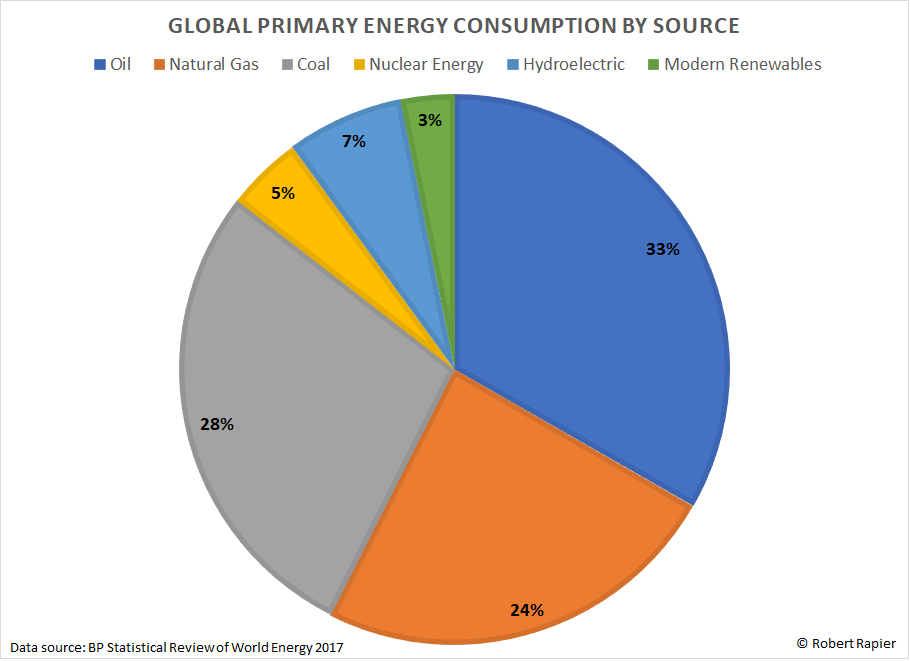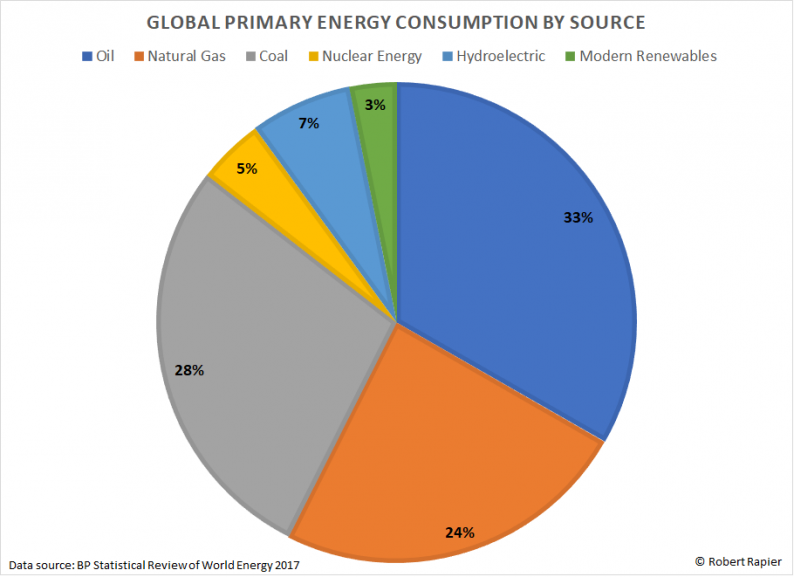Last month BP released its Statistical Review of World Energy 2017. Overall world primary energy consumption hit a new record, increasing by 171 million metric tons of oil equivalent (MTOE) from 2015 to 2016. The largest share of that increase came from new oil consumption, which accounted for 77 MTOE of the increase. Natural gas took the second biggest share with 57 MTOE of new consumption.
Interestingly, coal consumption declined by 53 MTOE, but modern renewables like wind and solar power increased by 53 MTOE. So one could accurately argue that the increase in the consumption of modern renewables like wind and solar power exactly offset the decline in coal consumption. That seems to be the first time that has ever happened.
The balance of the energy consumption increase was made up of increases in nuclear power (+9 MTOE) and hydropower (+27 MTOE).
Over the past decade, global primary energy consumption has increased by 17%, but the energy mix is slowly shifting. For overall energy consumption in 2016, fossil fuels continued to maintain a dominant share. Oil led all sources with a third of global energy consumption.

Primary energy consumption by source.
Coal still had the second largest share with 28% of global consumption, but natural gas at 24% is closing the gap on coal. In 2016, fossil fuels made up 85% of global energy consumption. Nuclear contributed 5%, while renewables like wind, solar, geothermal, and biomass contributed 3%. Along with hydropower, renewables made up 10% of primary energy consumption.
For reference, in 2010 the renewable share was 1.3%, and fossil fuels were at 86.9%. So global energy systems are shifting, albeit it slowly because of the large share held by fossil fuels. Renewables will likely keep growing at exponential rates for the foreseeable future, and even then it is going to take some time to capture significant market share from fossil fuels.












Leave A Comment